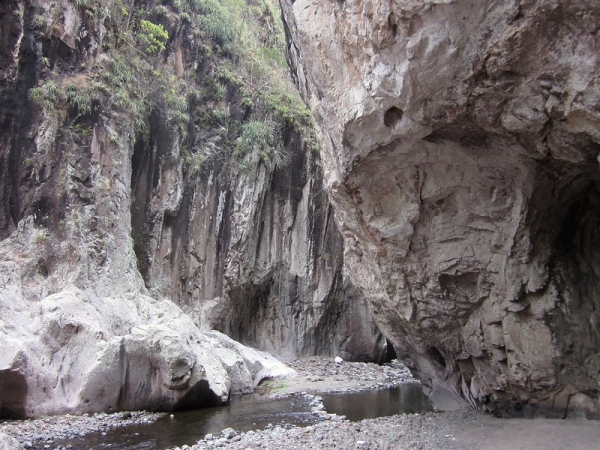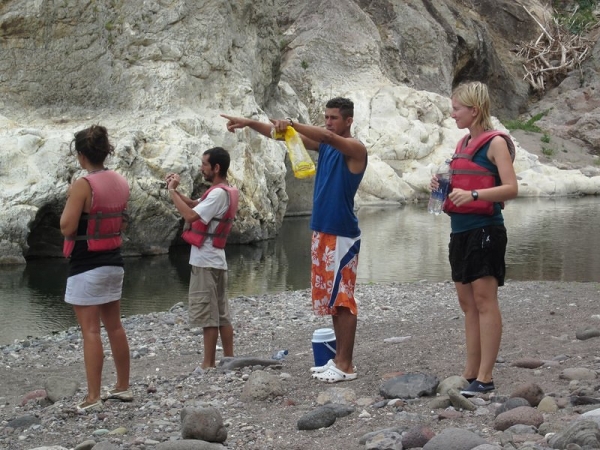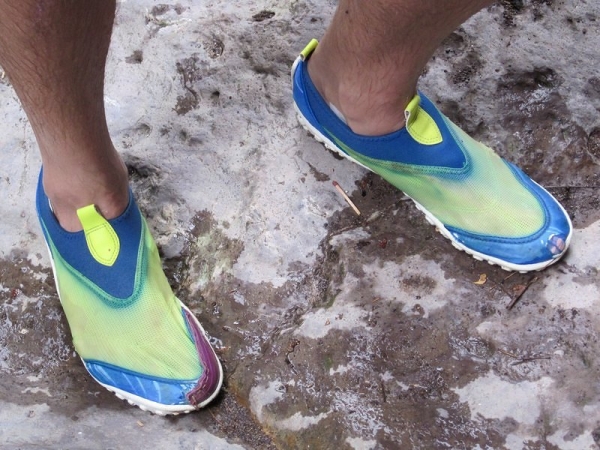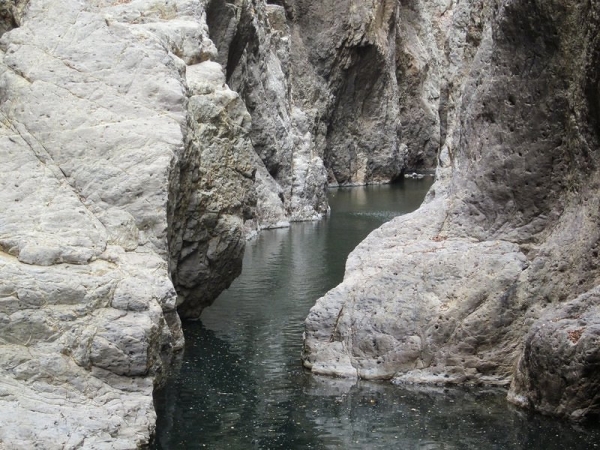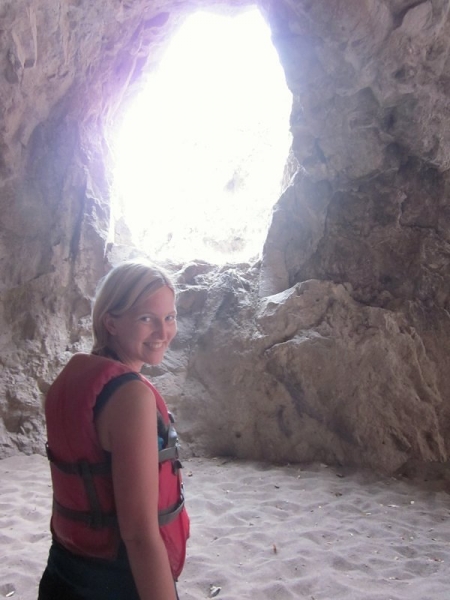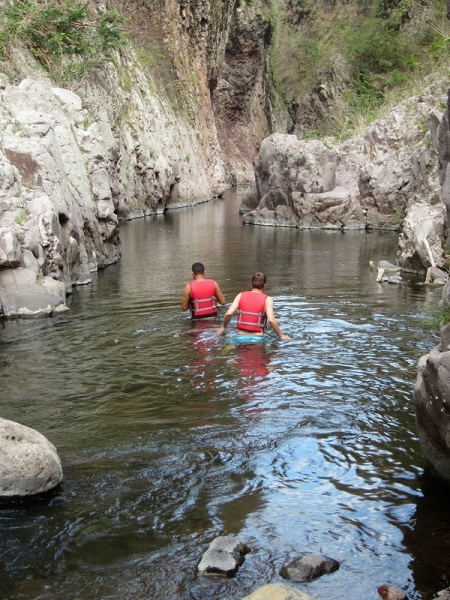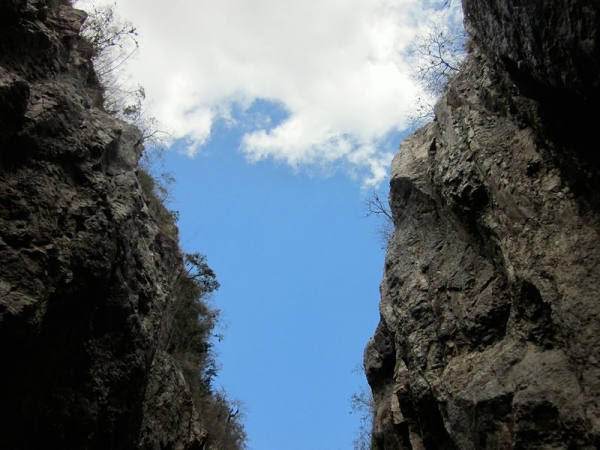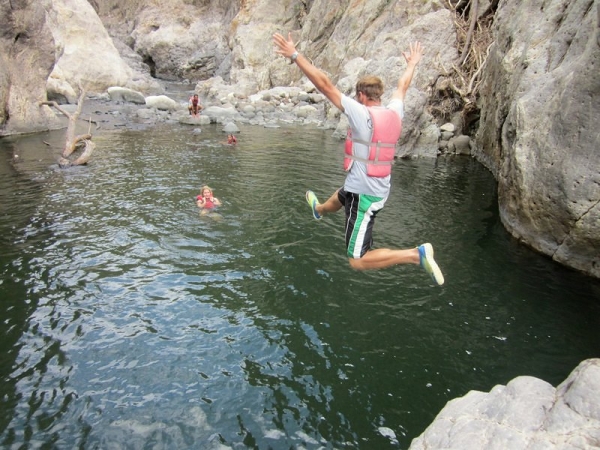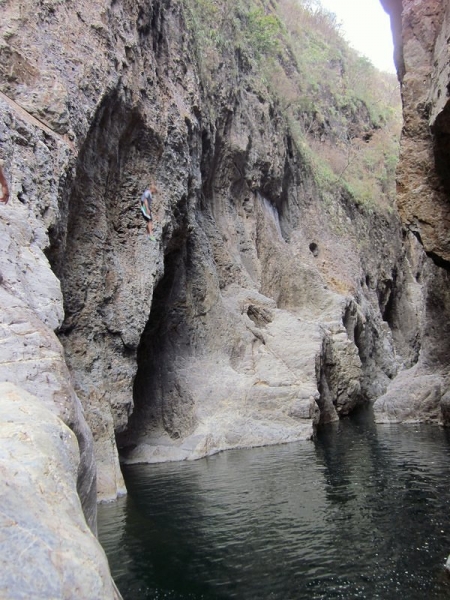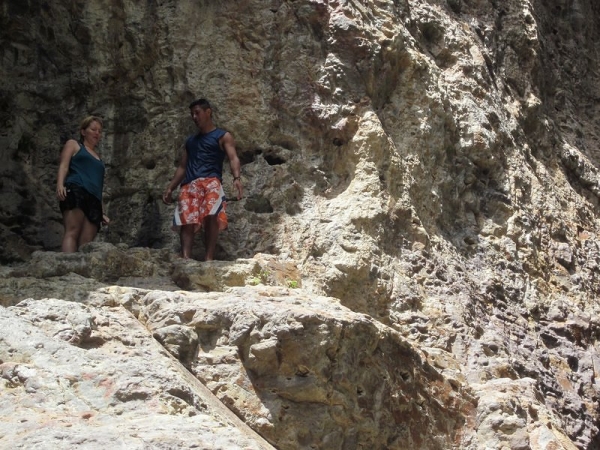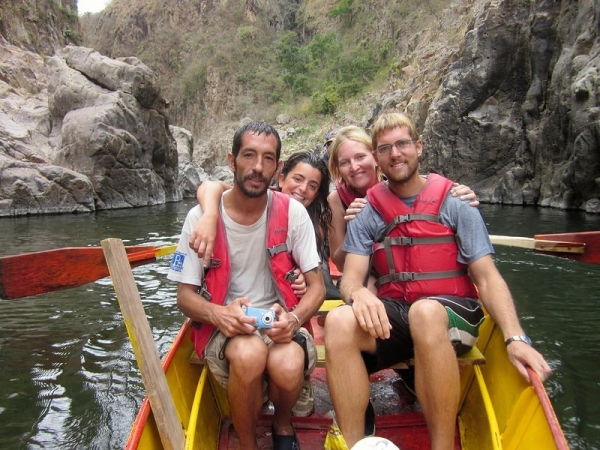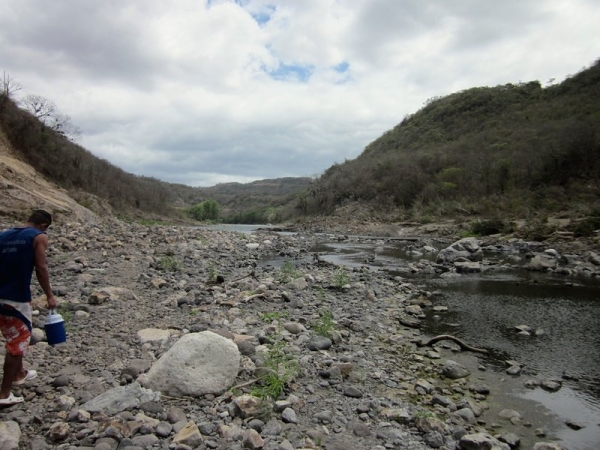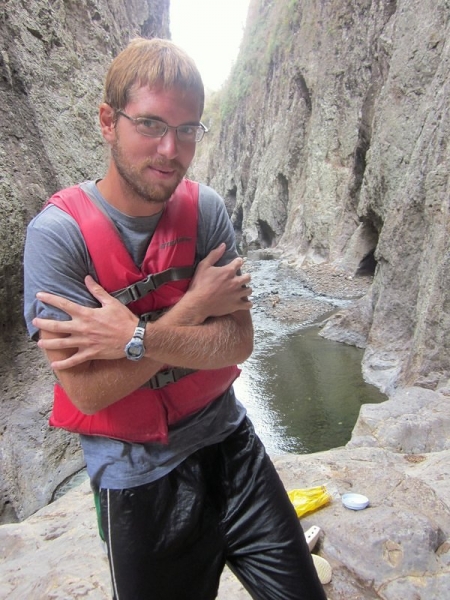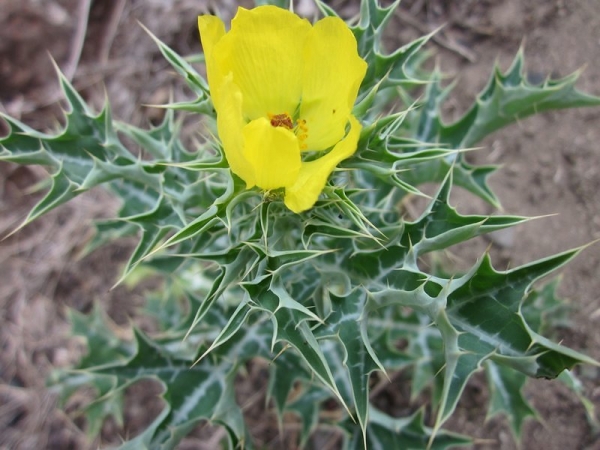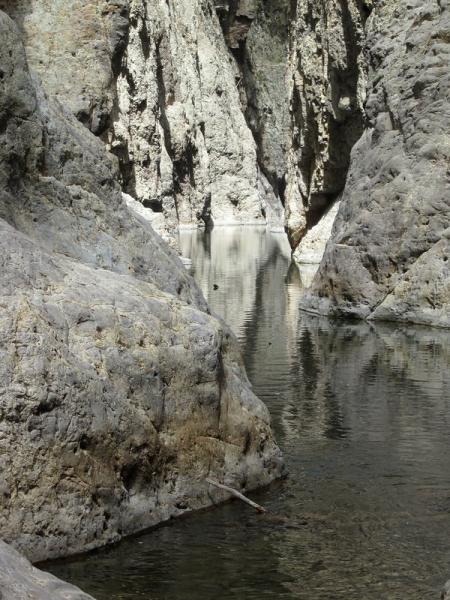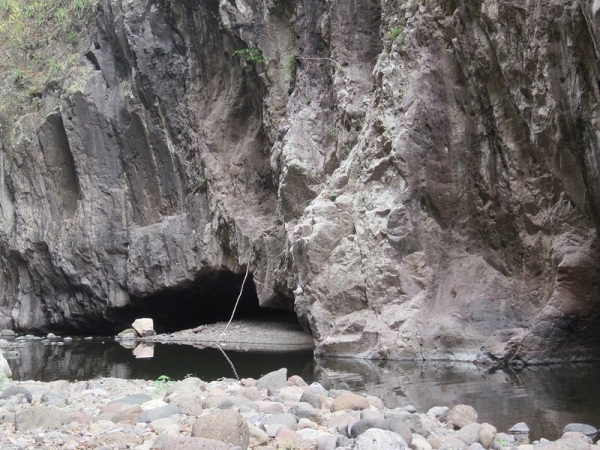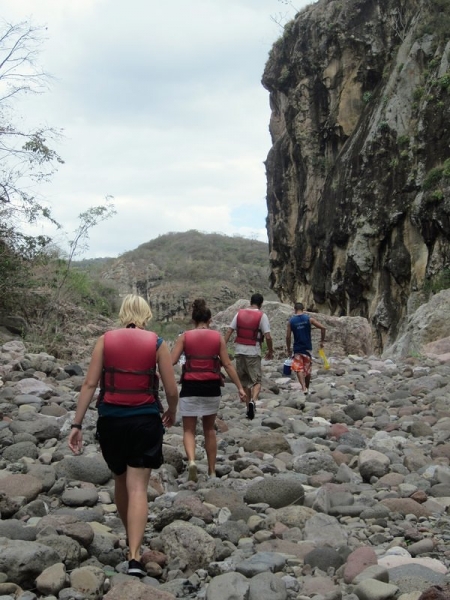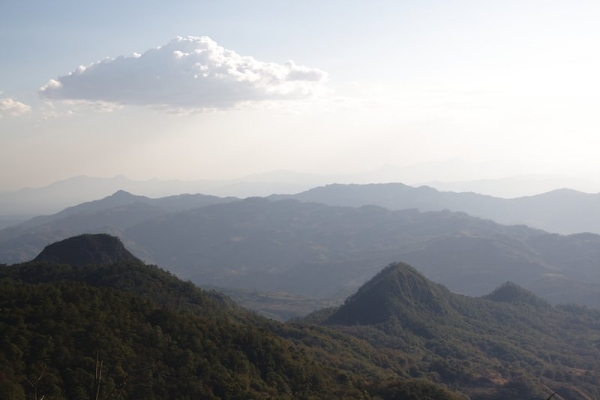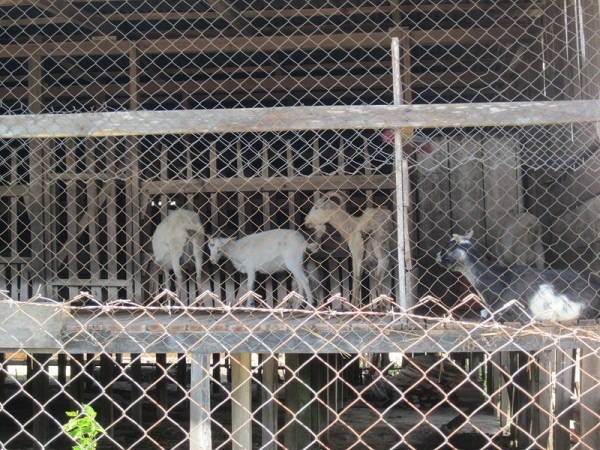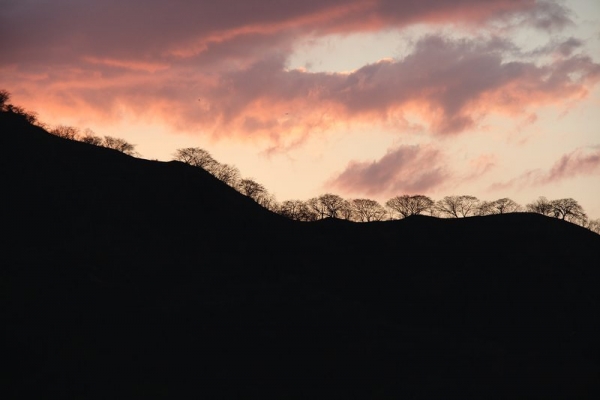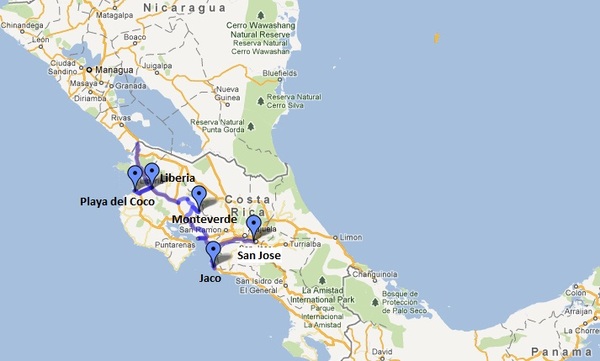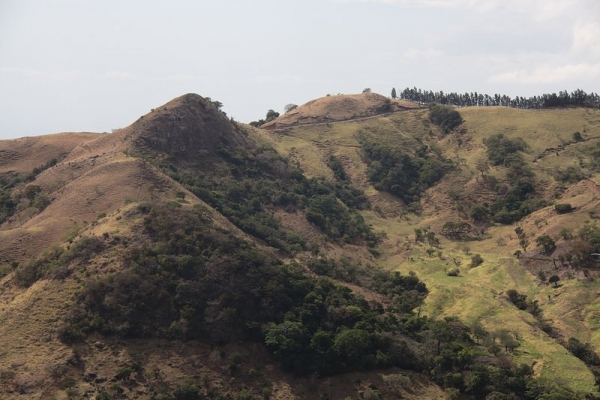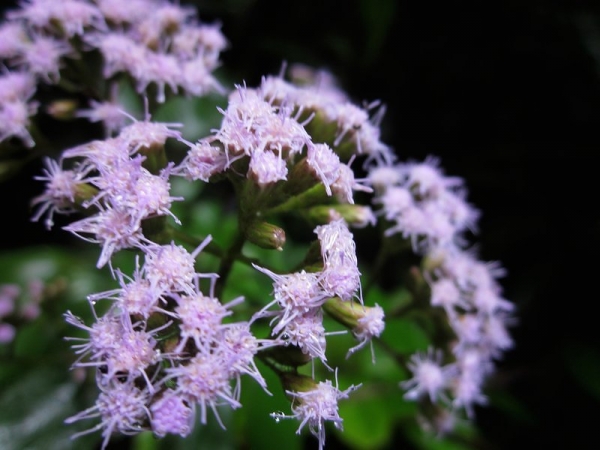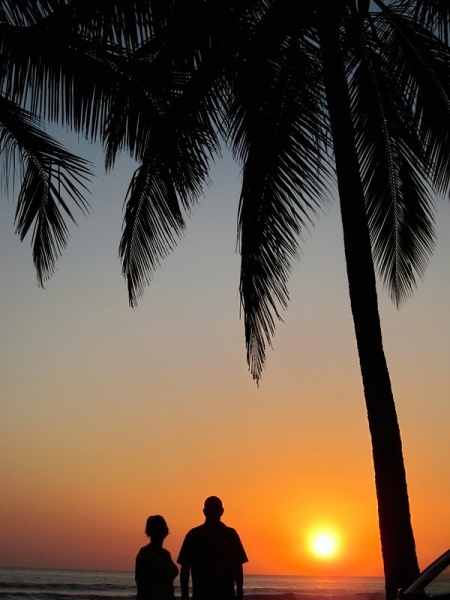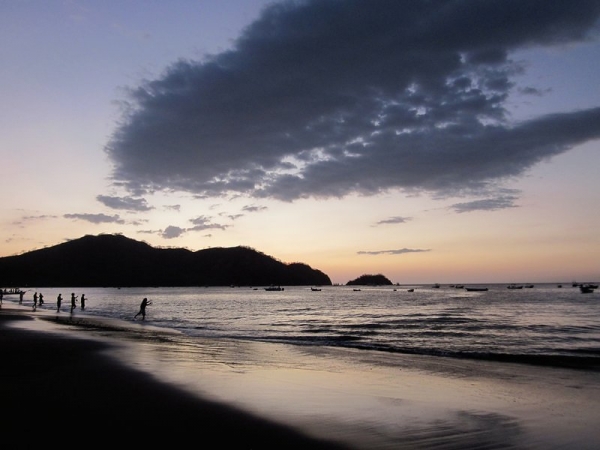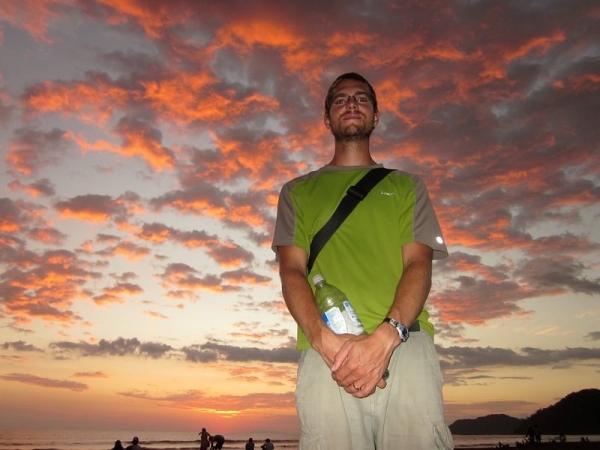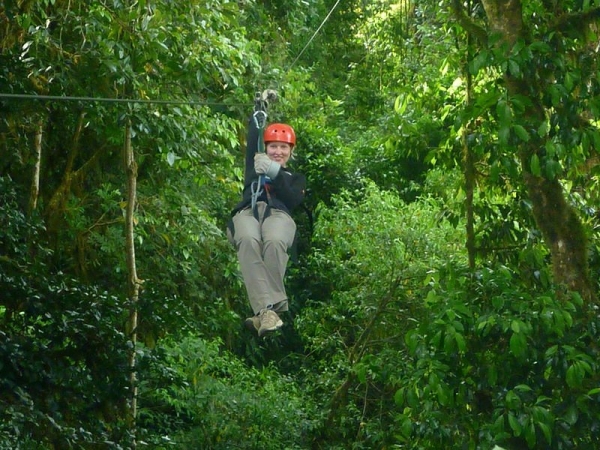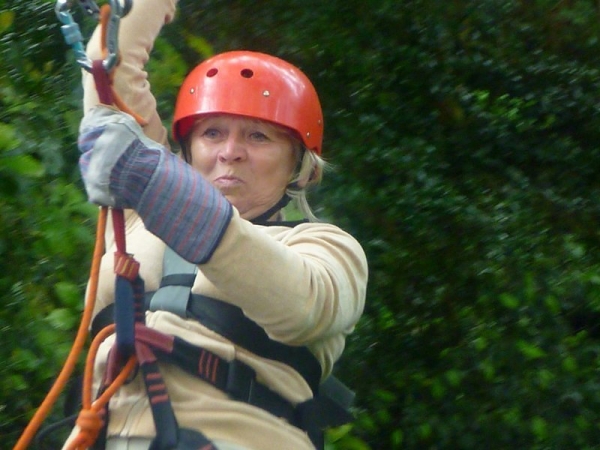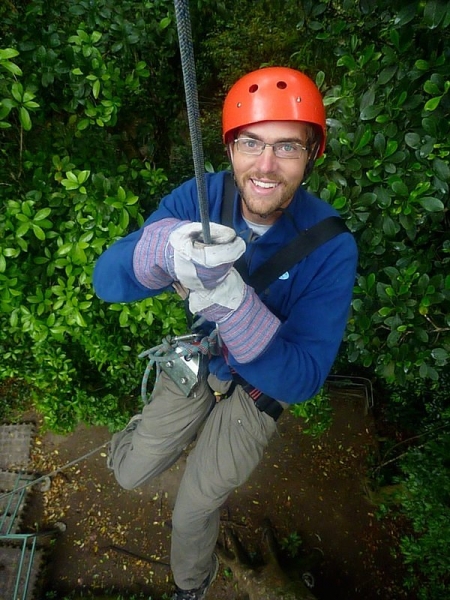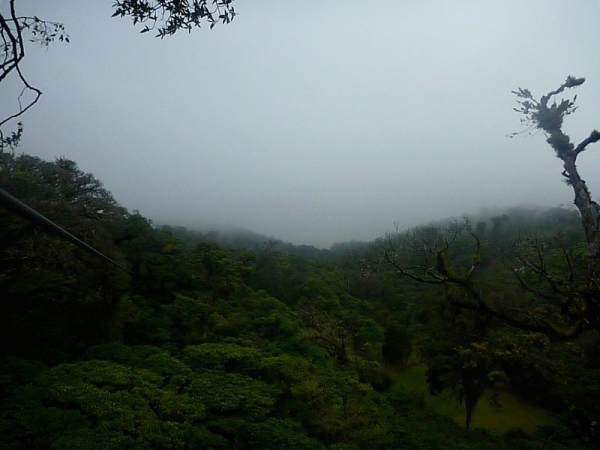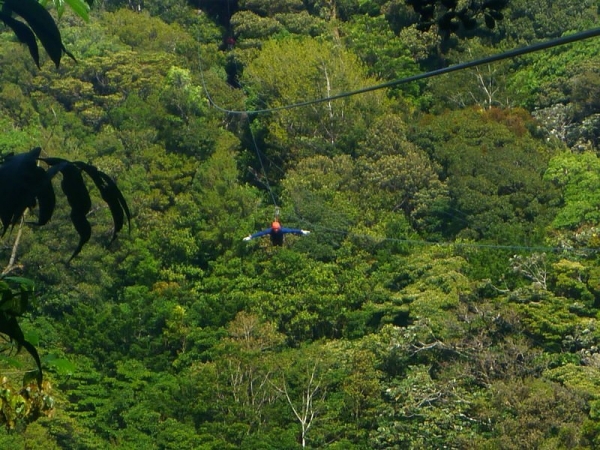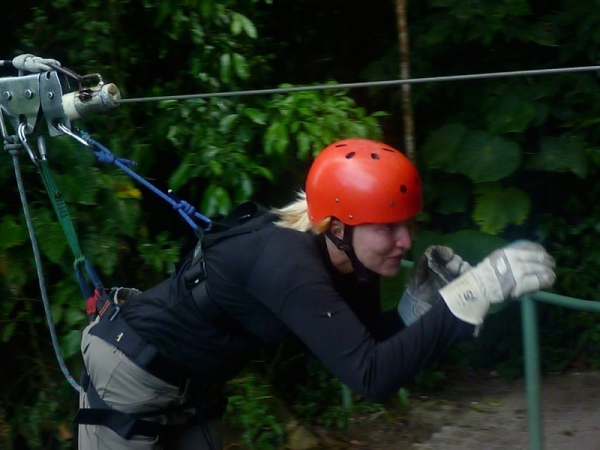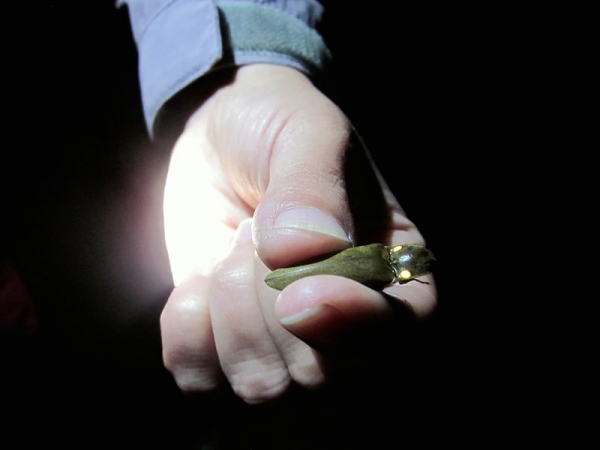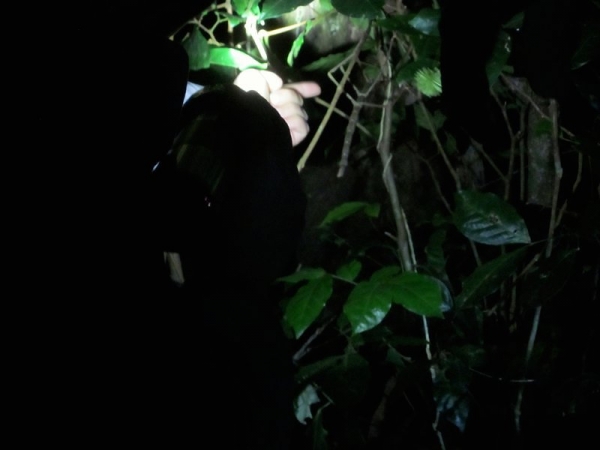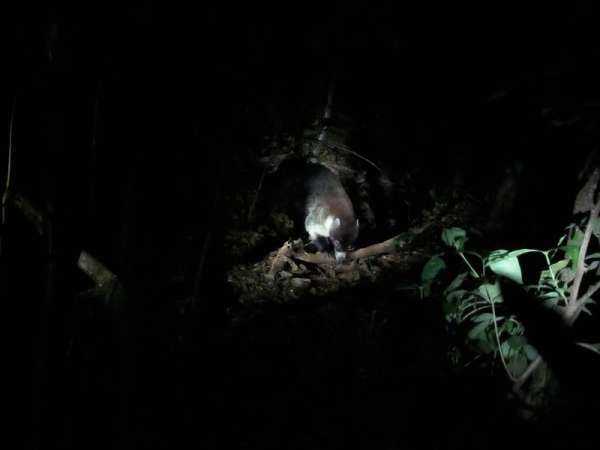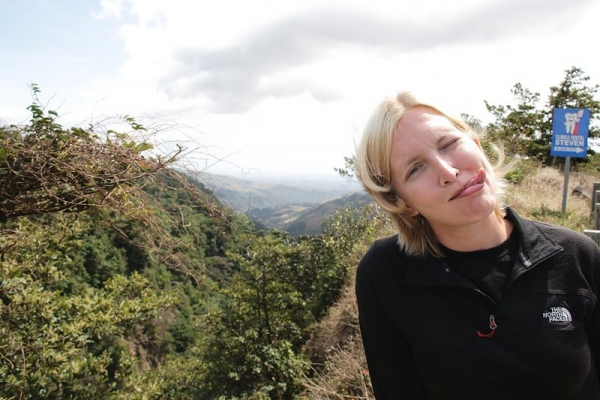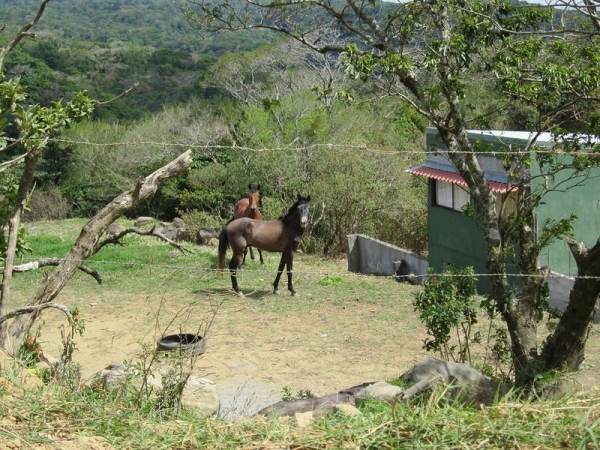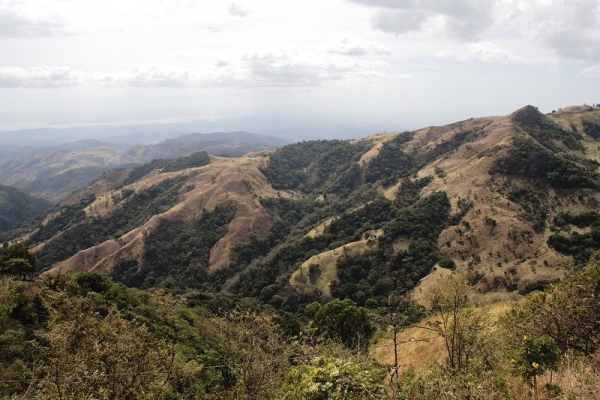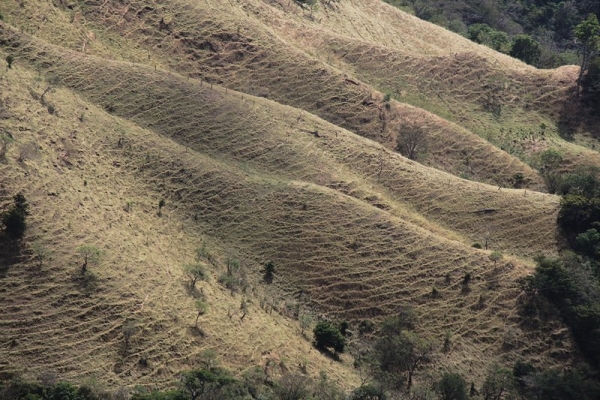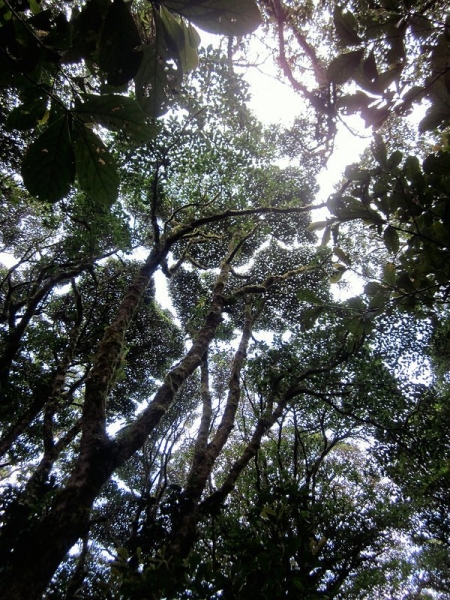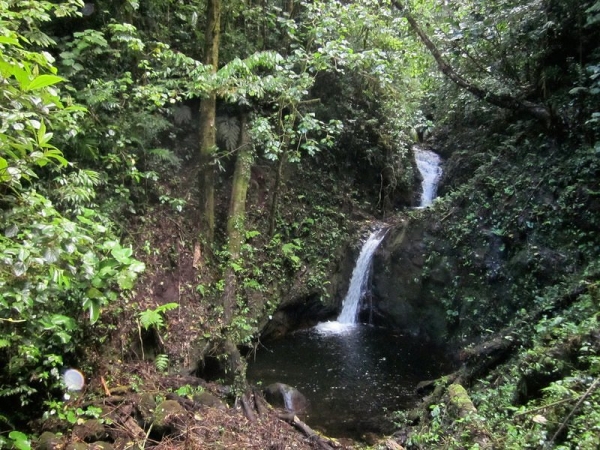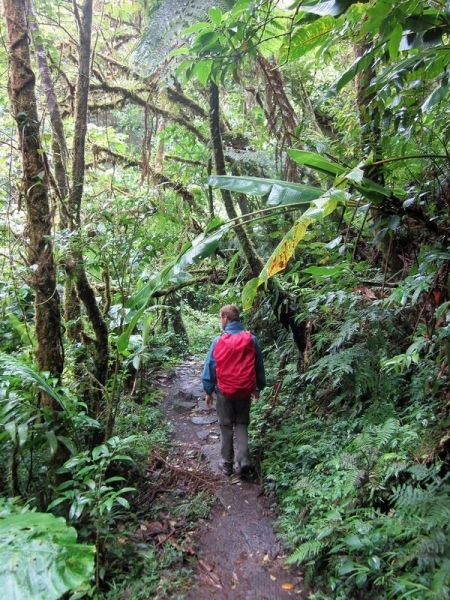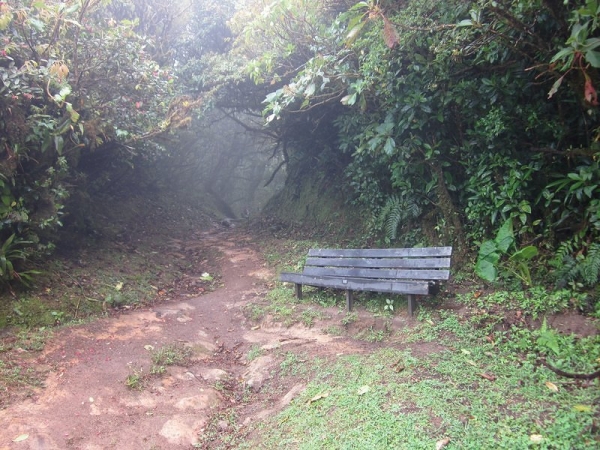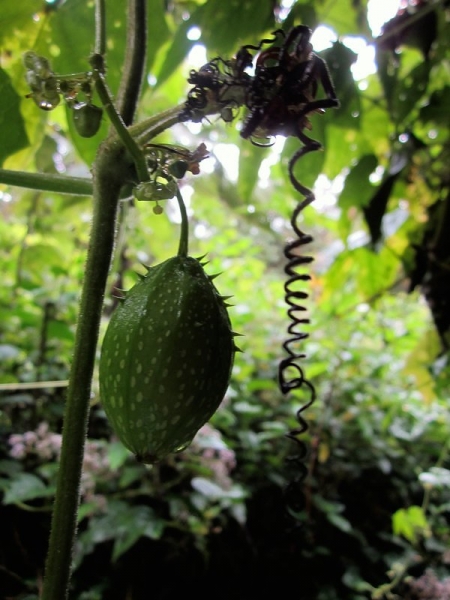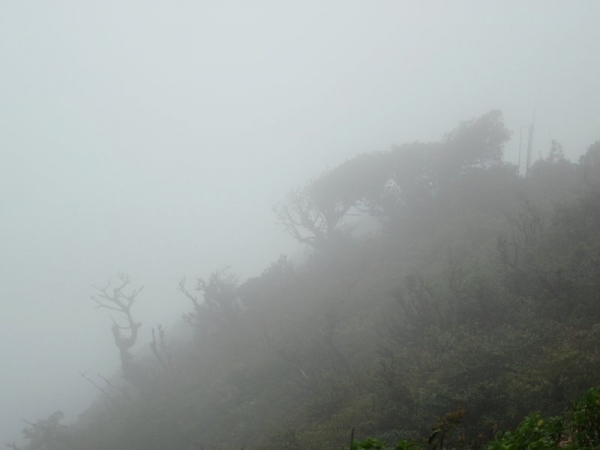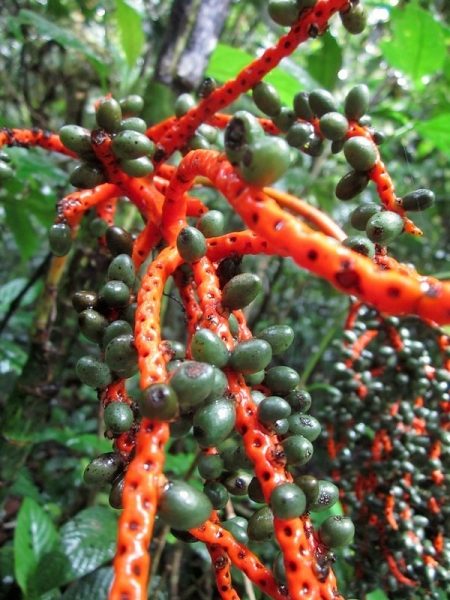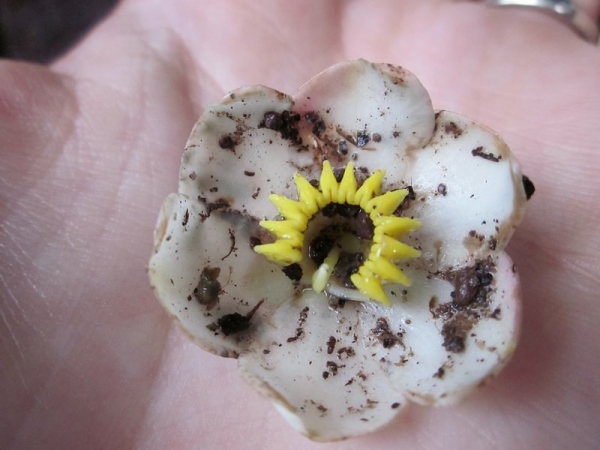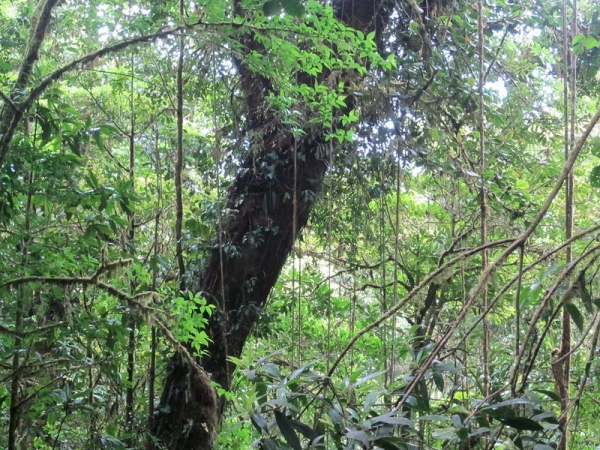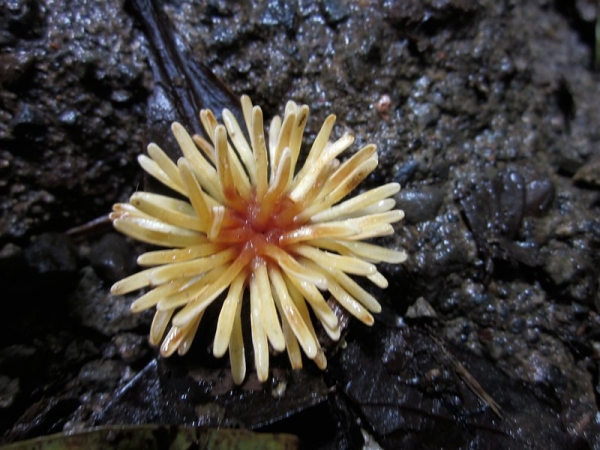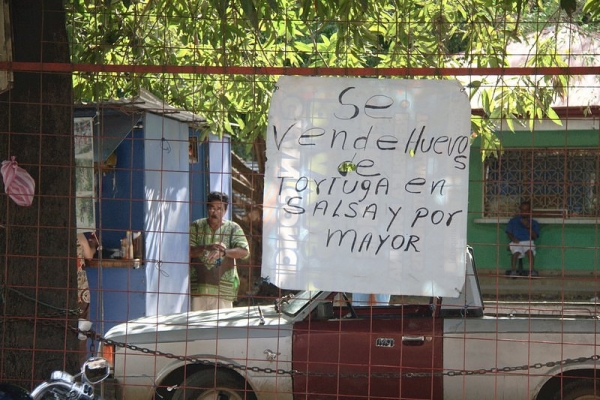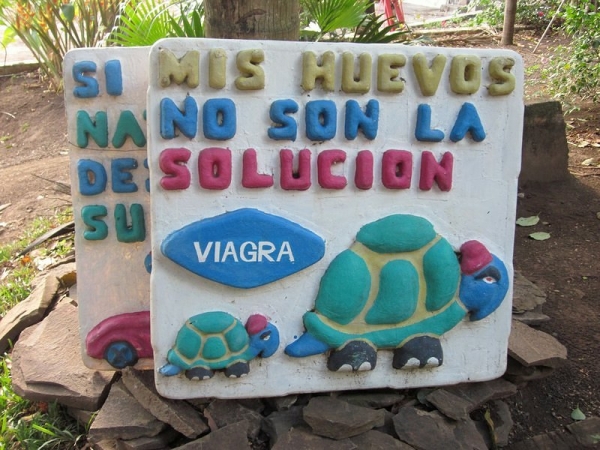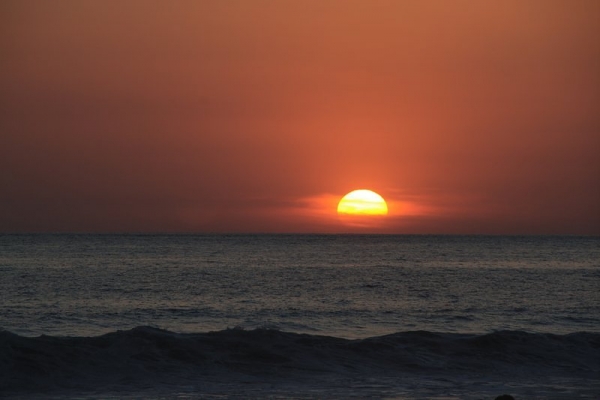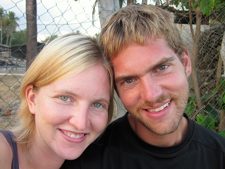It’s not every day that we pass up the opportunity to explore something for ourselves in favour of a guide, but the Cañón de Somoto seemed like a good place to splurge. And we’re glad we did.
Somoto Canyon
The Cañón de Somoto, located 15 km north of Somoto, Nicaragua, is a beautiful 3 km long gorge cut into solid rock by the Rio Coco. At places, the granite ridges are less than 10 m apart. It’s possible to hike along the upper ridge yourself, or even explore the lower reaches, but we found our guide invaluable here.
Our guide, guiding
We booked our tour through the guide recommended by our hotel (Maudiel, cel. 8699 8426), and were given three options: 3 hours, 4 hours, or 5 hours. We chose the longest tour, as it seemed to be the best value at $25 USD per person, versus $20 pp for the 4 hour one. The three hour tour didn’t even go to the bottom of the canyon, so we didn’t bother to learn its cost. The price included return transportation from our hotel and rental of water shoes.
Mike’s stylin’ water shoes… our guide cracked up every time he looked at them
At 8:00 am, our Spanish speaking guide, Maudiel, met us at our hotel and we took a taxi to the “house of the guides.” Once there, we shared a typical breakfast (an extra 40 cordobas, or $1.75 CAD) of gallo pinto, eggs, fried plantain, cheese, and tortillas. We met up with a couple from Spain and Argentina who would be joining us, then took another cab to the canyon entrance.
Somoto Canyon
From there, we walked along and through the riverbed of Rio Tapacali, which has cut itself a small canyon. There were several small caves to poke our heads into along the way.
We continued until it met with the Rio Coco (Central America’s largest river), stopping to check out a small waterfall along the way.
The waterfall
The scenary was spectacular and we were able to document it all through a combination of our waterproof camera case and the guide’s waterproof container. We worked our way down the rivers through a combination of walking along the edge, wading through ankle/knee/waist/chest deep water, and swimming. On many occasions, I would just stop and float and look up at the canyon walls around me.
Wading through the river
Just enjoying the scenery
The highlight of the tour, besides the magnificent canyon we walked and swam through, was the cliff jumping. We started with a small jump… a mere 3 metres or so.
This jump was no problem!
Later, we climbed up onto the canyon wall and wet our feet with a 10 metre jump into the river below. All four of us took the plunge, though not without a little apprehension. Then, Maudiel challenged us to try the 20 m jump that he had been talking about the whole way there. Mike was the first to agree, and after a little more rock climbing he stood shivering (he says it was because he was cold… but I don’t believe him) 20 metres above the water’s surface. With a yell and a loud splash, he earned the applause of everyone on the cliff. He told us he screamed, ran out of air, and still hadn’t hit the water – that’s how high it was.
Mike, jumping off the 20 m cliff. Can you find him?
Not to be outdone (though it took a little coaxing), I climbed up the 20 m cliff too, and became just the second female in Maudiel’s five year history of guiding to complete the jump.
Oops… I just looked down
Like Mike, I let out an excited “wooo!”, paused, realized I was still only halfway down, and had time for a more frightened “ahhh!” before I hit the water. In an uncharacteristic manner, I even held the right body position and didn’t slap or crash into the water. I surfaced elated. After a quick damage assessment, I discovered I had only lost a contact… which I managed to salvage and return to its rightful place with the aid of a life jacket Mike tossed down.
Big jumps make big splashes!
After climbing back up, we all repeated the 10 m jump (no one else attempted the 20 m), before swimming to the next cliff. There, Mike did a 15 m jump while I enjoyed being a spectator (my left ear was full of water and in some pain from the last small jump, so I decided to sit – or should I say float – this one out).
The tour ended with a 400 m swim, a quick boat ride to the end of the canyon and a 2 km hike back to the guide’s house.
An easy ride back out of the canyon
Our walk back
We arrived there at about 1:45 pm, changed into dry clothes, and headed back into Somoto for some delicious rosquillas (baked corn biscuits).
The tour was something I would wholeheartedly recommend to any traveller wandering through Nicaragua. It was a chilly day though, so plan to have a nice hot chocolate when you’re done.
Just a little cold
Oh… and for all you female travellers out there… try the 20 m jump – you won’t regret it!
